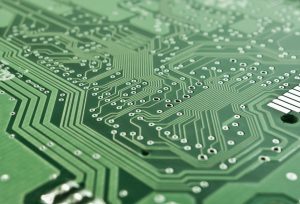3D printing and electronic products still seem to be somewhat novel, but this technology is expected to bring huge changes to the industry. Although the technology is still mainly used as a prototyping tool, the electronics industry can take advantage of 3D printing fast speed to market and increase design and customization freedom.
How does 3D printing work with electronics?
The 3D printing of electronic products usually involves the use of material ejection technology. Using this process, conductive ink and insulating ink are ejected on the printing surface with a line diameter as small as a few microns. UV light is then applied to cure the ink.
A distinguishing feature of material ejection is that it facilitates multi-material 3D printing. For the electronics industry, this means that functional circuits and housings can be manufactured simultaneously in a single printing process, greatly simplifying the assembly process.
5 Benefits of 3D printing for electronics
1. Print a perfect in-house prototype
In an industry that is competing like electronic products, the demand for smaller and thinner devices with electronic circuits having improved functions is inevitable. However, developing prototypes of printed circuit boards (PCBs)-the core of any electronic device as well as other electronic parts is often challenging, and this task is usually outsourced. This usually leads to longer delivery times, in which case, outsourcing may also cause intellectual property issues. However, the advent of 3D printing means that prototypes that create circuits and circuit boards can be moved internally, allowing electronics manufacturers to reduce procurement costs while eliminating any concerns about IP infringement.
2. Speed up time-to-market
Producing internal prototypes can increase the efficiency stage in the product design process. 3D printing can speed up the turnaround of design iterations and speed up the design verification stage. By developing products faster, electronics manufacturers can gain a competitive advantage and achieve more flexible manufacturing.
3. Enhance design flexibility
3D printing provides opportunities to design complex shapes and components. For example, multilayer circuits can now be 3D printed on uneven flexible surfaces, which is not possible with traditional manufacturing techniques. 3D printing also enables engineers to design for functionality rather than manufacturability, which means that complex structures with embedded electronic devices, packaged sensors, and antennas can be produced more easily.
4. Expand the capability of customization
3D printing expands the ability to manufacture customized electronic products. For example, engineers at the University of Minnesota are studying the potential of printing 3D custom sensors directly on the skin. Although the customization of electromechanical parts through 3D printing is still in its infancy, custom consumer electronics products have become a reality. 3D printing can be used to create personalized electronic enclosures, USB cases, and keyboards.
5. Simplify the supply chain
Manufacturers who choose to use 3D printing to produce electronic products internally may have a significant impact on the supply chain. The benefit of in-house manufacturing is to simplify or even reduce outsourcing, thereby reducing related transportation and transportation costs. 3D printing of electronic products also reduces warehousing and distribution costs due to the opportunity to manufacture and create a digital inventory on demand.
What can the conductive 3D printing offer?
3D printing complex electronic components can go further with conductive 3D printing. Using 3D printing to create electronic devices with conductive functions is particularly useful for developing IoT (Internet of Things) projects. This innovative technology can allow the creation of 3D printing devices such as LEDs or touch sensors. However, the function of this 3D printed conductive device may involve larger projects, soft robots, 3D electronic products, and communication devices, such as 3D printed near field communication (NFC) antennas.
In a few years, we may be able to use additive manufacturing to create a fully functional smartphone or multi-material product? If these ideas are still a dream today, then innovations related to conductive 3D printing and electronic devices will now show new opportunities. It may now be time to reconsider our vision of housings, circuit boards and electronic components. From the prototyping process to the production and management of the supply chain, additive manufacturing can help you meet new challenges.
Nano Dimension’s DragonFly Pro System
Nano Dimension specializes in 3D printed multi-layer PCB prototypes on various substrates (rigid and flexible). Its DragonFly Pro System 3D printer relies on material jetting technology and is capable to print PCBs with various features like interconnectors.
Nano Dimension’s system is notable for multi-material 3D printing, using proprietary conductive and dielectric inks simultaneously to manufacture functional circuits and antennas.
Neotech AMT
German-based Neotech AMT specializes in the hybrid 3D printing of electronics. Its system, the PJ 15X, combines CNC motion platform and 3D capable print heads to produce conductors, semi-conductors, heater patterns, resistors, and more. The machine is designed for applications in product development and rapid prototyping.
BotFactory PCB 3D printers
Low-cost prototyping of circuit boards is now possible with the BotFactory line of 3D printers. The systems use an inkjet technology to lay down small droplets of conductive and insulating inks on various substrates. The desktop systems are ones of the most affordable options for 3D printing of electronic components on the market today.


